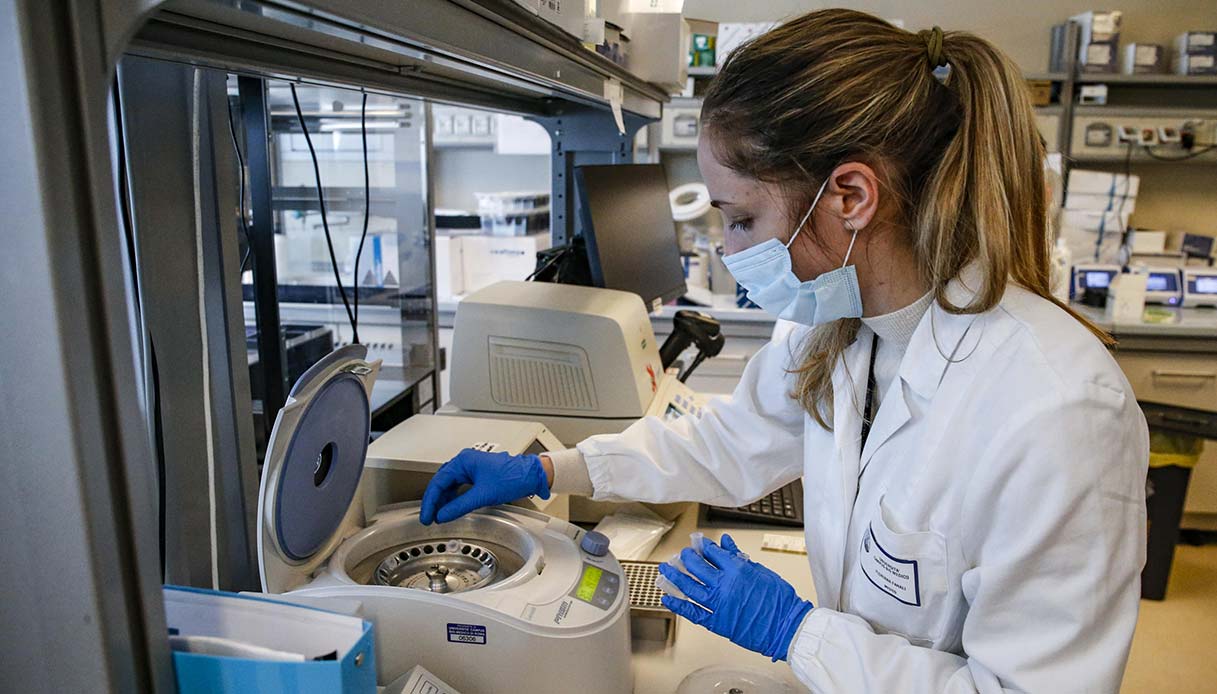When the first achievements in deciphering the human genome were announced in 2001, the scale of the discovery was compared to the moon landing. Today that undertaking is accomplished. A maxi consortium of scientists announces that the human genome sequence is now complete. About 20 years after the start of the adventure to discover man’s DNA, that missing 8% that had not yet been fully sequenced, especially because it consists of highly repetitive fragments difficult to align with the rest, has been filled, is went to his place. No more gaps in the 3 billion bases (or ‘letters’) of the genome, exult the authors of study that will forever mark the history of medicine, published in ‘Science’. Let’s see why this is a fundamental turning point for the medicine of the present and the future.
The completed genome
T2T-CHM13: it is the code that no one in the scientific community will forget. Thus the newly completed genome was dubbed. And this, the experts explain, is a very important update on the current reference genome, called GRCh38, which is used by doctors when searching for disease-related mutations, as well as by scientists who observe the evolution of human genetic variation.
The scientific path
In 20 years, therefore, we have gone from the first ‘draft’ – the one produced by the Human Genome Project – to the definitive work, that is, the first complete and uninterrupted sequence of a human genome. The consortium signs the company Telomere to Telomere (T2T)which includes the leadership of the researchers of the National Human Genome Research Institute (Nhgri, a reality of the US National Institutes of Health-Nih), which was the main funder of the study, University of California at Santa Cruz and University of Washington in Seattle.
Future prospects
“Generating a truly complete human genome sequence is an incredible scientific achievement,” comments the director of the Nhgri, Eric Green. “This fundamental information – he continues – will strengthen the numerous efforts underway to understand all the functional nuances of the human genome, which in turn will strengthen genetic studies on human diseases”.
The regions over which the last gaps were filled were difficult to place on the chromosomes. The analysis of the complete sequence of the genome will allow to arrive at more accurate maps for 5 chromosomal arms, and all this it will open up new lines of research. This will answer basic biology questions about how chromosomes segregate and divide correctly. The T2T consortium used the now complete genome sequence as a reference to discover over 2 million additional variants in the human genome. These studies provide more accurate information on genomic variants within 622 clinically relevant genes. And again: this information will be particularly valuable for studies aimed at understanding how people’s DNA differs. They are vital insights for understanding the genetic contributions to certain diseases and for using the genome sequence as a routine part of clinical care in the future.
Many research groups have already started using one preliminary version of the complete sequence of the human genome for their research. Thousands of researchers have developed better laboratory tools, computational methods and strategic approaches to decipher the complex sequence. Six articles comprising the completed sequence appear in ‘Science’, along with complementary articles in many other journals.
Lo studio Eichler
This, the authors note, is not just a milestone, but a departure for many other scientific explorations. From this stem new works will blossom. And behind this enterprise there are life stories. Like that of Evan Eichler, which has always been attracted to the most complex regions of humanity’s genome: the most bizarre ones with long stretches of repeated DNA or with extra copies of genes. He suspected that these regions could play crucial roles in evolution and disease. That’s why, more than 20 years ago, it became part of the Human Genome Project, a $ 3 billion program to ‘read’ every letter of a person’s DNA.
In 2003, this massive sequencing effort failed to read more than 8% of the genome. Scientists knew these missing pieces contained highly repetitive sequences and largely dismissed them as ‘junk’. Not so, says Eichler, a researcher with the Howard Hughes Medical Institute at the University of Washington. “It turned out that many of the regions I was interested in were in those gaps” not yet filled. And so Eichler pledged to finish the job, along with a team of about 100 scientists led by Adam Phillippy of Nhgri and Karen Miga of the University of California, Santa Cruz (Ucsc).
In the genetic manuscript of life, “we are seeing chapters that have never been read before,” says Eichler. Knowing that “there are no more hidden or unknown parts,” adds University of Washington geneticist Robert Waterston, a leader in the original Human Genome Project and not involved in the new work, “I think psychologically it’s important.” The data, says Miga, offers “the foundation for a new era” in the study of centromeres, the parts that hold two strands of chromosomes together and play crucial roles in cell division. The repetitive regions include these and ribosomal DNA, which provides instructions for the cell’s protein factories. In the past, all that repetition made it impossible to assemble some broken pieces in the correct order. It’s like having identical pieces of a puzzle: scientists didn’t know where they were going. Today with the advancement of technology it has been possible to solve the riddle. “We now have a Rosetta stone to observe full variation in hundreds of thousands of other genomes in the future,” concludes Eichler.
In collaboration with beraking latest news
